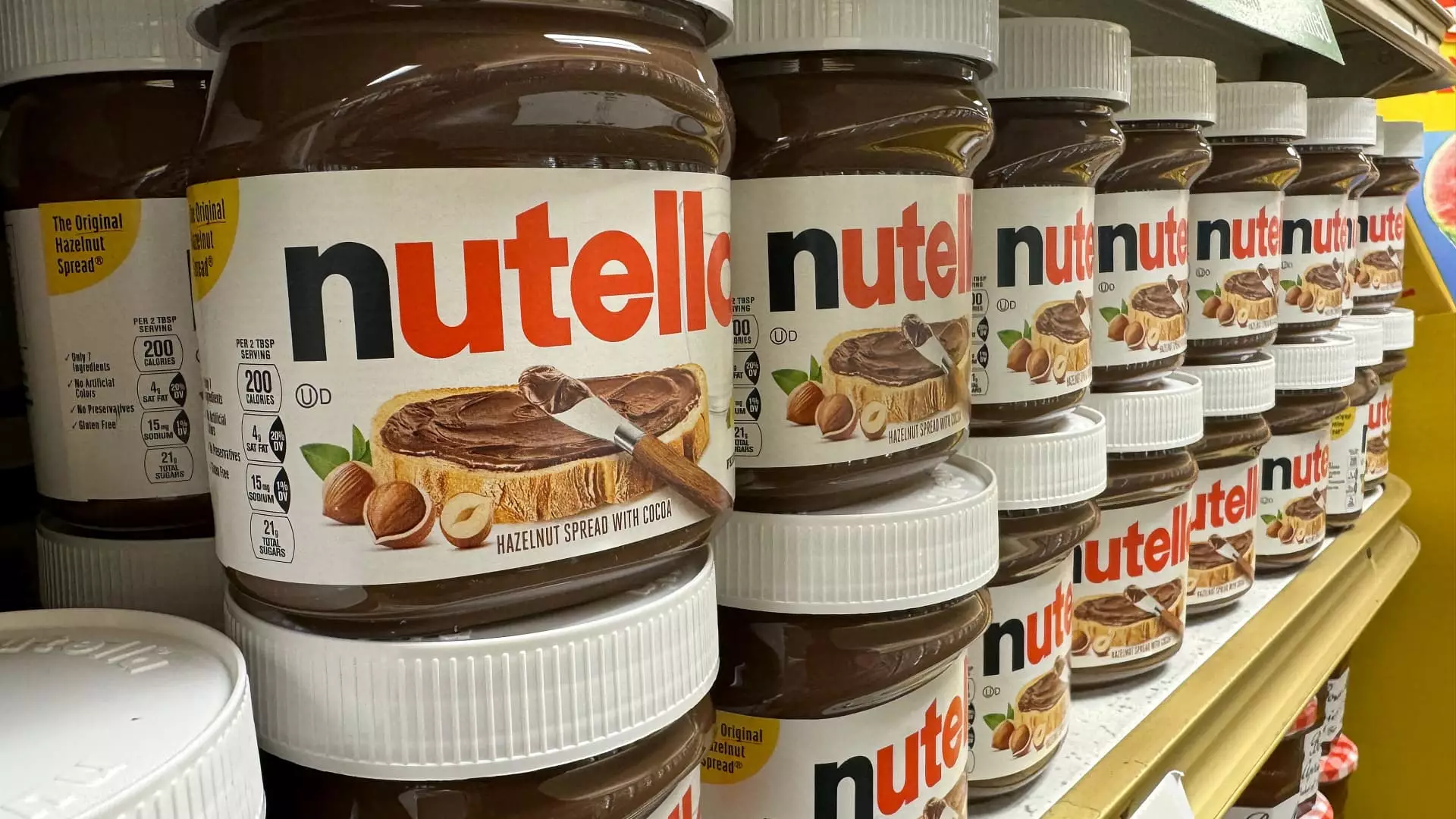In an ambitious pivot meant to capture an expanding slice of the American sweets market, Ferrero North America is set to unleash Nutella Peanut, a flavor that marries the beloved hazelnut-cocoa spread with roasted peanuts. This is not merely a tweak to an existing formula; it is a radical departure, marking the first significant flavor addition since Nutella’s inception. The announcement precedes the Sweets and Snacks Expo in Indianapolis, where Ferrero will reveal its most extensive suite of new products to date, signaling its intent to secure a more substantial foothold in the competitive U.S. confectionery landscape. Is this bold move an indication of Ferrero finally prioritizing the American palate over traditional recipes?
The decision to layer peanuts into Nutella isn’t arbitrary—it taps directly into the increasing American penchant for nut-infused creations. As Ferrero’s president, Michael Lindsey, points out, the objective is to create an “American twist” to global bestsellers, allowing the company to appeal to local tastes. Considering the relentless rise of flavored spreads in grocery aisles across the U.S., this innovation could be a game changer—not just for Ferrero but also for consumers accustomed to the classic Nutella experience. The timing is certainly opportune, as interest in vegan and nut-based cuisines continues to rise.
Transforming Classics: Ferrero Rocher Reinvented
Not one to rest on its laurels, Ferrero is going the extra mile by reimagining its iconic Ferrero Rocher. By transitioning from its traditional spherical design to more elegant squares, this confection is not only eye-catching but also cleverly designed to enhance the sensorial experience of consuming these treats. With five varieties on the horizon—including milk, dark, white, caramel, and assorted flavors—Ferrero appears to be armed with the strategy tailored for diversification.
Market experiments indicate that consumers are increasingly drawn to diverse flavor profiles; thus, Ferrero’s new format may serve not only to refresh its brand image but also to drive incremental sales. The artful square shape may facilitate easier sharing and eating—an essential feature for group settings and social occasions in a post-pandemic world. In light of mounting competition in the chocolate segment, this strategic makeover could potentially disrupt traditional candy boundaries, enticing consumers who might ordinarily default to well-entrenched brands such as Hershey’s or Mars.
Acquiring a Taste for American Consumers
With the transformation of Nutella and Ferrero Rocher, one wonders if these moves are reflective of a larger strategy underpinning Ferrero’s Americanization efforts. Over the past decade, Ferrero has aggressively expanded its footprint in North America through acquisitions—a move designed to pump lifeblood into its existing portfolio. The purchase of Nestlé’s U.S. candy business introduced Ferrero to beloved brands like Nerds and Butterfinger, but can these nostalgic entries coexist with contemporary innovations without alienating core customers?
Lindsey’s commitment to invest $75 million into local manufacturing signifies the company’s long-term vision and adaptive strategy, especially in a trade landscape shaped by tariffs and local sourcing demands. The integration of Oregon-sourced hazelnuts indicates not merely a reaction to geopolitical shifts but a deep commitment to localization—an approach that may well resonate with eco-conscious consumers. Such strategic positioning could spur Ferrero’s growth trajectory, even challenging established incumbents that have long dominated the sector.
Marketing Mania: Sports and Sweets Collide
Ferrero’s evolution is not just confined to product lines; it extends to revamping its marketing approach to capture the zeitgeist. Lindsey hinted at plans to dive into high-profile advertising ventures coinciding with major sporting events, aiming to cultivate brand visibility in venues that showcase a captive audience. This not only echoes the growing trend among candy manufacturers looking to harness sporting spectacles for promotional leverage but also taps into the various consumer experiences linked with these events.
As sports fans flock to stadiums and tune in from their homes, the culinary rituals surrounding these occasions offer Ferrero an invaluable platform to introduce its revamped product offerings. The insight behind launching campaigns during events like the Super Bowl and the World Cup is that they forge powerful emotional connections between consumers and brands. By aligning itself with moments of collective ecstasy, Ferrero can position its products as essential companions to American social gatherings.
With innovation at its core and a keen awareness of evolving consumer preferences, Ferrero North America appears poised not merely to compete but to redefine the landscape of candy consumption. The ambitious footfalls it is taking could align not only with a financial windfall but also a cultural turning point in how treats are perceived and enjoyed in a rapidly changing marketplace. As Ferrero boldly sets forth on this transformative path, one cannot help but wonder: What other delectable surprises lie ahead?

